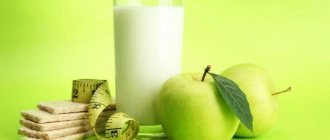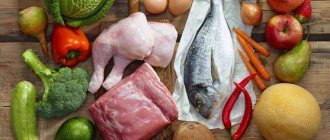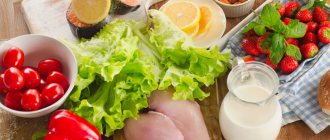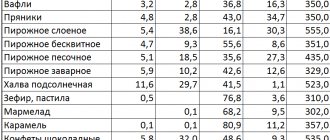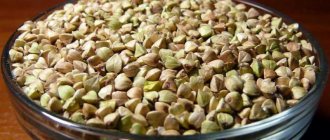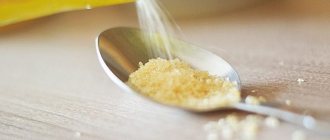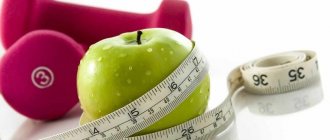A protein-vitamin diet is a measure that is used in cases where you need to quickly get rid of 5-7 kilograms of excess weight. This diet for weight loss takes no more than 10 days; for a trial, you can reduce the period to one week. This diet, when compared with other diets, is considered quite easy. Its advantages can be considered:
- Lack of hunger during weight loss: achieved through a fractional diet;
- Absolute safety for the body. The menu is structured in such a way that the body receives all the necessary food groups: vitamins, microelements and proteins;
- Easy way out. Due to the fact that the diet is full of all the necessary macro- and microelements, after returning to a normal diet, there is no strong desire for prohibited foods;
- Light menu. The dishes that make up the diet do not require much time to prepare, you will have a lot of free time;
- Quickly get rid of extra pounds without much effort.
It is also worth noting that this type of food has a fairly wide diet, so you will not get tired of the same dishes on the menu.
General rules
A vitamin-protein diet for weight loss refers to a low-calorie protein-low-carbohydrate diet, since fats and simple carbohydrates are excluded from the diet. At the same time, it contains a sufficient amount of proteins (meat, fish, egg whites, cottage cheese), which provide the body with amino acids and maintain performance.
The vitamin component is represented by vegetables and fruits. They are a supplier of complex carbohydrates, vitamins, minerals and fiber. Complex carbohydrates provide the body with energy, fiber normalizes intestinal function and is able to remove cholesterol and toxic metabolic products. An increase in the amount of protein against the background of a significant restriction of fats and carbohydrates ensures increased consumption of fat from the depot. Alternating vegetable and protein foods changes metabolism and leads to weight loss.
There are several food options:
- The first is alternating protein and vitamin meals throughout the day.
- The second is alternating (two days each) all protein and vitamin days.
- The third is alternating protein and vitamin meals throughout the day (as in the first option), but the main difference is that the last meal is carbohydrate (porridge) and no later than 18-00 hours.
The first option is more rational, and also easier to implement. The second is that it carries too much protein load on protein days, which is dangerous even for people who do not have kidney pathology. Constipation may also occur these days . flatulence , pain in the intestines and stomach
may occur The third option, due to the increase in complex carbohydrates (porridge), is less strict and easier to tolerate.
Doctors' opinion
The protein-vitamin diet has received positive reviews from nutritionists. They say that this method of losing weight accustoms people to fractional meals and healthy foods. Frequent consumption of foods allows you to avoid the feeling of hunger, which is good for the body and does not cause stress. Weight loss experts note the variety of foods and dishes. They say that this diet helps you decompress and take a break from heavy food.
Nutritionists point out that this food system is not as safe as it seems at first glance. They warn that you should not resort to it for a long period and more than once every two months. This can cause serious health problems.
To prevent the weight from returning, experts advise ensuring a gradual exit from the nutrition system, lasting at least ten days. It is recommended to gradually introduce porridge, pasta, whole grain bread and bran into the diet. Carbohydrates should make up 50% of breakfast. They give the body a long-lasting feeling of fullness. During the period of exiting the diet, you can eat dark chocolate.
In general, the protein-vitamin diet for weight loss has received grateful reviews. Those losing weight were satisfied with the results achieved and recommend this nutrition system to other people.
Basic Rules
- Protein and vitamin portions (vegetables and fruits) cannot be combined within one meal. The effectiveness of the technique is precisely related to separate nutrition.
- Fats and carbohydrates (porridge, starchy vegetables and sweet fruits) are completely excluded.
- It is not allowed to consume sauces and seasonings that stimulate the appetite. Moderate consumption of salt and optional use of lemon juice for salads and other dishes are allowed.
- Take food six times a day to avoid feeling hungry.
- Control portions: fish, meat and poultry 150-200 g, the usual portion of vegetable salad and 1-2 fruits depending on the size. If you eat cheese, but it still contains fat, then it is better to eat it in the first half of the day, when you are more active. A serving of cheese is 50 g, and cottage cheese is 100-150 g, and you can supplement your meal with kefir or yogurt.
- To prevent constipation during the day you need to eat 500 g of vegetables and fruits.
- Follow the drinking regimen - 1.5-2 liters of liquid: mineral water, tea and coffee without sugar, rosehip infusions and various herbal infusions and teas.
As protein products, you can choose: low-fat beef, veal, poultry (without skin), rabbit, lean fish, seafood, low-fat cottage cheese, low-fat cheeses (brynza, suluguni and others up to 30% fat), fermented milk products, egg whites. Meat and fish are cooked boiled or steamed.
The vitamin component is represented by fruits and vegetables in fresh and thermally processed form. It is worth choosing unsweetened fruits and non-starchy vegetables. In this regard, the following are excluded: grapes, apricots, raisins, bananas, persimmons, potatoes, boiled beets and carrots are limited as vegetables with a high glycemic index.
Fats are limited in the diet, but not completely excluded, since even low-fat milk and dairy products contain them. They are also found in small quantities in lean-looking meat and fish. Of course, fats are an important dietary nutrient (necessary for the synthesis of hormones , absorption of fat-soluble vitamins, etc.), but limiting them for 7-10 days will not adversely affect your health.
A prerequisite is the exclusion of simple carbohydrates, which include: sugar, condensed milk, baked goods, confectionery, sweets, honey, jam, baked goods. Simple carbohydrates in the body are quickly converted into monosaccharides, which, when consumed in excess, are converted into fat.
The diet includes all citrus fruits, apples, plums, pineapples, pears
To maintain the effect for a long time, the correct exit from the diet is important. You need to leave it for the same number of days as you spent on it. You can’t “pounce” on carbohydrate foods; you need to gradually add porridge, whole grain bread, brown rice, and some durum wheat pasta to your diet.
First, they are introduced for breakfast, replacing half a serving of protein food. Then gradually add them to lunch or afternoon snack (for example, bread with juice or kefir). It is better to always leave dinner without carbohydrates, eating a protein dish with a vegetable side dish. Introduce a ban on the consumption of fatty meats and sausages, sour cream and cream - these are the products that you can do without. Good quality vegetable fats should be present, and animal fats are sufficient in dairy and lean meat products. Of the sweets, dark chocolate may be the first to return to the diet, and you will have to forget about baking for a long time. This is the only way to guarantee weight stability.
If necessary, this dietary program can be repeated after 3 months.
Prudent Principles
How to lose weight when we are used to eating a lot of potatoes, cereals, buns, fatty sauces, smoked meats, fast foods, confectionery delicacies, baked goods and chips with lemonade? The above is not recommended for anyone. To achieve balance, it is better to take the diet described above as a basis and include in it:
- the amount of normal fat required for the body (butter and vegetable oil, sour cream);
- slightly increase the intake of fast sugars due to sweet fruits and honey;
- add some healthy cereal side dishes, brown bread and nuts as sources of microelements, B vitamins, etc.
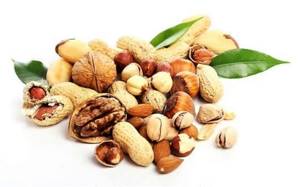
The result is a normal table for constant use. But for many, even this is difficult to achieve! It is not easy to give up temptations and subordinate your whole life to proper nutrition. We prefer to go on a diet for a couple of weeks, and then, albeit slowly, gradually - but return to fast foods, sweets and baked goods, to which we are so accustomed!
Of course this is wrong. But everyone chooses for themselves whether to be healthy and slim, or to go from one extreme to another, now gaining kilos, now losing them - until the body takes revenge for such changes.

For those who have doubts, I sincerely recommend using my video “Active Weight Loss Course” . I was able to rebuild my life and taste preferences - so can you! The main thing is to live long and happily, which means actively and without pain.
That's all for today. Thank you for reading my post to the end. Share this article with your friends. Subscribe to my blog. And let's move on!
Authorized Products
The basis of the diet is:
- Lean meat, poultry, rabbit, cooked by boiling, baking or steaming. These cooking methods do not involve the use of fats.
- Lean fish and seafood.
- Minimal fat content: fermented milk products, cottage cheese, cheese, ricotta cheese.
- The white of chicken eggs, from which you can prepare protein omelettes or boil them in the usual way.
- Non-starchy vegetables: spinach, asparagus, green peas, zucchini, tomato, cucumber, all types of cabbage (limit cauliflower), onions (any type), lettuce, garlic, bell pepper. Vegetables can be consumed in various forms. When preparing salads, you need to use garden greens. You can make smoothies based on vegetables (but without adding milk, kefir or yogurt). You can diversify your diet with vegetable stews and purees, which contain several types of vegetables.
- Unsweetened fruits: all citrus fruits, apples, plums, pineapple, pears.
- Herbal tea, green tea, rosehip infusion, mineral water and purified drinking water.
Table of permitted products
| Proteins, g | Fats, g | Carbohydrates, g | Calories, kcal | |
Vegetables and greens | ||||
| greenery | 2,6 | 0,4 | 5,2 | 36 |
| zucchini | 0,6 | 0,3 | 4,6 | 24 |
| broccoli | 3,0 | 0,4 | 5,2 | 28 |
| Brussels sprouts | 4,8 | 0,0 | 8,0 | 43 |
| cabbage | 1,2 | 0,2 | 2,0 | 16 |
| watercress | 2,3 | 0,1 | 1,3 | 11 |
| red onion | 1,4 | 0,0 | 9,1 | 42 |
| bulb onions | 1,4 | 0,0 | 10,4 | 41 |
| cucumbers | 0,8 | 0,1 | 2,8 | 15 |
| olives | 0,8 | 10,7 | 6,3 | 115 |
| salad pepper | 1,3 | 0,0 | 5,3 | 27 |
| arugula | 2,6 | 0,7 | 2,1 | 25 |
| celery | 0,9 | 0,1 | 2,1 | 12 |
| tomatoes | 0,6 | 0,2 | 4,2 | 20 |
| dill | 2,5 | 0,5 | 6,3 | 38 |
| garlic | 6,5 | 0,5 | 29,9 | 143 |
Fruits | ||||
| apples | 0,4 | 0,4 | 9,8 | 47 |
Mushrooms | ||||
| mushrooms | 3,5 | 2,0 | 2,5 | 30 |
Cereals and porridges | ||||
| oatmeal with water | 3,0 | 1,7 | 15,0 | 88 |
Dairy | ||||
| kefir 1% | 2,8 | 1,0 | 4,0 | 40 |
Cheeses and cottage cheese | ||||
| cottage cheese 0% (low fat) | 16,5 | 0,0 | 1,3 | 71 |
Meat products | ||||
| lean beef | 22,2 | 7,1 | 0,0 | 158 |
| veal | 19,7 | 1,2 | 0,0 | 90 |
| rabbit | 21,0 | 8,0 | 0,0 | 156 |
Bird | ||||
| boiled chicken breast | 29,8 | 1,8 | 0,5 | 137 |
| steamed chicken breast | 23,6 | 1,9 | 0,0 | 113 |
| turkey | 19,2 | 0,7 | 0,0 | 84 |
Eggs | ||||
| chicken eggs | 12,7 | 10,9 | 0,7 | 157 |
Fish and seafood | ||||
| boiled fish | 17,3 | 5,0 | 0,0 | 116 |
| squid | 21,2 | 2,8 | 2,0 | 122 |
| shrimps | 22,0 | 1,0 | 0,0 | 97 |
| mussels | 9,1 | 1,5 | 0,0 | 50 |
| seaweed | 0,8 | 5,1 | 0,0 | 49 |
| zander | 19,2 | 0,7 | — | 84 |
| cod | 17,7 | 0,7 | — | 78 |
| hake | 16,6 | 2,2 | 0,0 | 86 |
| pike | 18,4 | 0,8 | — | 82 |
Non-alcoholic drinks | ||||
| mineral water | 0,0 | 0,0 | 0,0 | — |
| instant chicory | 0,1 | 0,0 | 2,8 | 11 |
| green tea | 0,0 | 0,0 | 0,0 | — |
Juices and compotes | ||||
| rose hip juice | 0,1 | 0,0 | 17,6 | 70 |
| * data is per 100 g of product | ||||
Calculating your metabolism
To increase the effectiveness of the diet and prevent the body from being poisoned by the breakdown products of protein compounds, you should calculate the individual consumption of kilocalories per day. To do this, you need to know your metabolism, which can be determined using the formula. About 300 kcal is added to the resulting figure if a person leads a sedentary lifestyle and does not play sports. If someone who is losing weight actively trains, then another 400-800 kcal is added to this indicator. This will be your average daily calorie intake. If you do not exceed this value, the weight will actively disappear.
There are three formulas for calculating metabolism, which look like this:
- Basic formula:
- The weight in kilograms must be divided by 0.454.
- The resulting value must be multiplied by 0.409.
- Last step: the number obtained in the previous paragraph is multiplied by 24. This value will reflect the metabolic rate.
- Formula to calculate the average indicator:
- For women: 0.9•body weight in kg•24.
- For men: 1.0•body weight in kg•24.
- Harris-Benedict formula:
- For women: 655 + (9.6 • weight) + (1.8 • height in centimeters) – (4.7 • age).
- For men: 66 + (13.7 • weight) + (5 • height in centimeters) – (6.8 • age).
Fully or partially limited products
It is prohibited to include in the diet:
- sweets, confectionery, sugar, condensed milk, ice cream, candy, honey, waffles, jam, jam, chocolate, sweet drinks;
- nuts due to their high fat content and high calorie content;
- bananas, persimmons, grapes, apricots, dried fruits as sources of high carbohydrate content;
- potatoes, boiled carrots and beets, corn, mature legumes, as highly starchy vegetables, green peas are allowed;
- bread and cereals;
- salted/pickled vegetables;
- fatty meats, bacon, ham, smoked meats, lard, canned food;
- full-fat cottage cheese, butter, fatty fermented milk products, cream, sour cream;
- sauces and mayonnaise for dressing dishes;
- alcohol, carbonated sweet drinks, sweet tea and coffee;
- limit salt.
Table of prohibited products
| Proteins, g | Fats, g | Carbohydrates, g | Calories, kcal | |
Vegetables and greens | ||||
| vegetables legumes | 9,1 | 1,6 | 27,0 | 168 |
| potato | 2,0 | 0,4 | 18,1 | 80 |
| carrot | 1,3 | 0,1 | 6,9 | 32 |
| beet | 1,5 | 0,1 | 8,8 | 40 |
Fruits | ||||
| bananas | 1,5 | 0,2 | 21,8 | 95 |
| melon | 0,6 | 0,3 | 7,4 | 33 |
| figs | 0,7 | 0,2 | 13,7 | 49 |
| mango | 0,5 | 0,3 | 11,5 | 67 |
Berries | ||||
| grape | 0,6 | 0,2 | 16,8 | 65 |
Nuts and dried fruits | ||||
| raisin | 2,9 | 0,6 | 66,0 | 264 |
| dates | 2,5 | 0,5 | 69,2 | 274 |
Snacks | ||||
| potato chips | 5,5 | 30,0 | 53,0 | 520 |
Cereals and porridges | ||||
| porridge | 3,3 | 1,2 | 22,1 | 102 |
| white rice | 6,7 | 0,7 | 78,9 | 344 |
Flour and pasta | ||||
| pasta | 10,4 | 1,1 | 69,7 | 337 |
| pancakes | 6,1 | 12,3 | 26,0 | 233 |
| vareniki | 7,6 | 2,3 | 18,7 | 155 |
| pancakes | 6,3 | 7,3 | 51,4 | 294 |
| dumplings | 11,9 | 12,4 | 29,0 | 275 |
Bakery products | ||||
| buns | 7,2 | 6,2 | 51,0 | 317 |
| wheat bread | 8,1 | 1,0 | 48,8 | 242 |
Confectionery | ||||
| jam | 0,3 | 0,2 | 63,0 | 263 |
| jam | 0,3 | 0,1 | 56,0 | 238 |
| candies | 4,3 | 19,8 | 67,5 | 453 |
| cookie | 7,5 | 11,8 | 74,9 | 417 |
| cake | 3,8 | 22,6 | 47,0 | 397 |
| jam | 0,4 | 0,2 | 58,6 | 233 |
| dough | 7,9 | 1,4 | 50,6 | 234 |
| halva | 11,6 | 29,7 | 54,0 | 523 |
Cakes | ||||
| cake | 4,4 | 23,4 | 45,2 | 407 |
Chocolate | ||||
| chocolate | 5,4 | 35,3 | 56,5 | 544 |
Raw materials and seasonings | ||||
| seasonings | 7,0 | 1,9 | 26,0 | 149 |
| mustard | 5,7 | 6,4 | 22,0 | 162 |
| mayonnaise | 2,4 | 67,0 | 3,9 | 627 |
| honey | 0,8 | 0,0 | 81,5 | 329 |
| sugar | 0,0 | 0,0 | 99,7 | 398 |
| vinegar | 0,0 | 0,0 | 5,0 | 20 |
Dairy | ||||
| milk 3.2% | 2,9 | 3,2 | 4,7 | 59 |
| condensed milk | 7,2 | 8,5 | 56,0 | 320 |
Cheeses and cottage cheese | ||||
| amber processed cheese | 7,0 | 27,3 | 4,0 | 289 |
| cottage cheese 18% (fat) | 14,0 | 18,0 | 2,8 | 232 |
Meat products | ||||
| fatty pork | 11,4 | 49,3 | 0,0 | 489 |
| pork fat | 1,4 | 92,8 | 0,0 | 841 |
| salo | 2,4 | 89,0 | 0,0 | 797 |
| bacon | 23,0 | 45,0 | 0,0 | 500 |
Sausages | ||||
| smoked sausage | 28,2 | 27,5 | 0,0 | 360 |
| smoked sausage | 9,9 | 63,2 | 0,3 | 608 |
Bird | ||||
| smoked chicken | 27,5 | 8,2 | 0,0 | 184 |
| duck | 16,5 | 61,2 | 0,0 | 346 |
| goose | 16,1 | 33,3 | 0,0 | 364 |
Fish and seafood | ||||
| salted fish | 19,2 | 2,0 | 0,0 | 190 |
| canned fish | 17,5 | 2,0 | 0,0 | 88 |
| semi-finished fish products | 12,5 | 6,7 | 14,7 | 209 |
Oils and fats | ||||
| butter | 0,5 | 82,5 | 0,8 | 748 |
| creamy margarine | 0,5 | 82,0 | 0,0 | 745 |
| coconut oil | 0,0 | 99,9 | 0,0 | 899 |
| vegetable-fat spread | 0,0 | 40,0 | 0,0 | 360 |
| animal fat | 0,0 | 99,7 | 0,0 | 897 |
| cod liver oil | 0,0 | 99,8 | 0,0 | 898 |
| cooking fat | 0,0 | 99,7 | 0,0 | 897 |
Alcoholic drinks | ||||
| white dessert wine 16% | 0,5 | 0,0 | 16,0 | 153 |
| vodka | 0,0 | 0,0 | 0,1 | 235 |
| cognac | 0,0 | 0,0 | 0,1 | 239 |
| liquor | 0,3 | 1,1 | 17,2 | 242 |
| beer | 0,3 | 0,0 | 4,6 | 42 |
Non-alcoholic drinks | ||||
| cola | 0,0 | 0,0 | 10,4 | 42 |
| Pepsi | 0,0 | 0,0 | 8,7 | 38 |
| sprite | 0,1 | 0,0 | 7,0 | 29 |
| * data is per 100 g of product | ||||
Menu of vitamin-protein diet (Diet)
Taking into account the permitted foods and the basic principles of nutrition, you can create a varied diet. Below is a menu for a week of the first nutrition option - alternating protein and vegetable meals every 2.5 hours. To lose weight, it is important to follow a diet - long breaks in eating are not allowed. The time can vary within 30 minutes in order to reduce the breaks between meals, so the last dose will be at 20.00.
| Breakfast 8.00 |
|
| Second breakfast 10.30 |
|
| Lunch 13.00 |
|
| Afternoon snack 15.30 |
|
| Dinner 18.00 |
|
| Second dinner 20.30 |
|
| Breakfast 8.00 |
|
| Second breakfast 10.30 |
|
| Lunch 13.00 |
|
| Afternoon snack 15.30 |
|
| Dinner 18.00 |
|
| Second dinner 20.30 |
|
| Breakfast 8.00 |
|
| Second breakfast 10.30 |
|
| Lunch 13.00 |
|
| Afternoon snack 15.30 |
|
| Dinner 18.00 |
|
| Second dinner 20.30 |
|
| Breakfast 8.00 |
|
| Second breakfast 10.30 |
|
| Lunch 13.00 |
|
| Afternoon snack 15.30 |
|
| Dinner 18.00 |
|
| Second dinner 20.30 |
|
| Breakfast 8.00 |
|
| Second breakfast 10.30 |
|
| Lunch 13.00 |
|
| Afternoon snack 15.30 |
|
| Dinner 18.00 |
|
| Second dinner 20.30 |
|
| Breakfast 8.00 |
|
| Second breakfast 10.30 |
|
| Lunch 13.00 |
|
| Afternoon snack 15.30 |
|
| Dinner 18.00 |
|
| Second dinner 20.30 |
|
| Breakfast 8.00 |
|
| Second breakfast 10.30 |
|
| Lunch 13.00 |
|
| Afternoon snack 15.30 |
|
| Dinner 18.00 |
|
| Second dinner 20.30 |
|
Advantages and disadvantages
| pros | Minuses |
|
|
Reviews of the vitamin-protein diet and results
In most cases, reviews indicate effectiveness and achievement of good results, even with a slight deviation from the diet. Many people note that there is no feeling of hunger, and such eating does not cause discomfort.
- “... The diet is effective even for those who are not very overweight. I really liked it and found it relatively easy. I lost weight quickly and didn’t feel hungry. I lost 9 kg in 14 days. I modified it to suit my working conditions and employment. It was convenient for me to eat like this: alternate only 2 foods a day. For example, eggs and oranges, cottage cheese with yogurt and apples, chicken breast with salad. I started the diet by alternating protein and vegetable days - there was discomfort and hunger on the vegetable day. Therefore, I decided that a mixed diet was more suitable. I can recommend it to everyone";
- “... The diet suited me. I felt good, I wasn’t hungry – it only took 2 days for me to get used to it. I noticed that the centimeters were coming off well, especially on the stomach and waist. This is despite the fact that I violated things a little - I didn’t remove carbohydrates at all (sometimes I ate candy or bread), I didn’t always strictly adhere to the regime. In the end, I was happy with my result - 4 kg in a week. The holidays are coming, so I will try to restrain myself. I’ll definitely repeat it in 2 months and will do it periodically”;
- “... The diet seemed most suitable for summer, so I chose it. I have a terrible sweet tooth, but I had to give up sugar, sweets like waffles, halva, cookies and pastries. I've been on this diet for a week now. I don’t feel such a terrible feeling of hunger and I tolerate it normally. Maybe because it’s hot outside and you don’t really want to eat. I try to drink more water. I lost 4 kg in a week! I liked that I didn’t starve, but ate my favorite food: cheese, yogurt, fish, meat, cucumbers and tomatoes, various cabbage. True, I added vegetable oil and lemon juice to salads - it was satisfying and healthy. Probably, when you consume a lot of fiber, you don’t even want to eat bread. For six months after the diet, I followed a more or less rational diet (without buns, sweets and bread) and only 1 kg returned. I recommend".
Fasting as stress for the body
Fasting is naturally a huge stress for the body, which later, when the diet ends, remembering how hungry it was, will begin to save everything for future use.
As a result, all the kilograms that were lost will return and bring with them several more. Therefore, the best option is proper nutrition.
To do this, you should eat as little fatty, fried, sweet foods as possible, as well as various semi-finished products, to which a huge number of different flavoring additives are now added.
